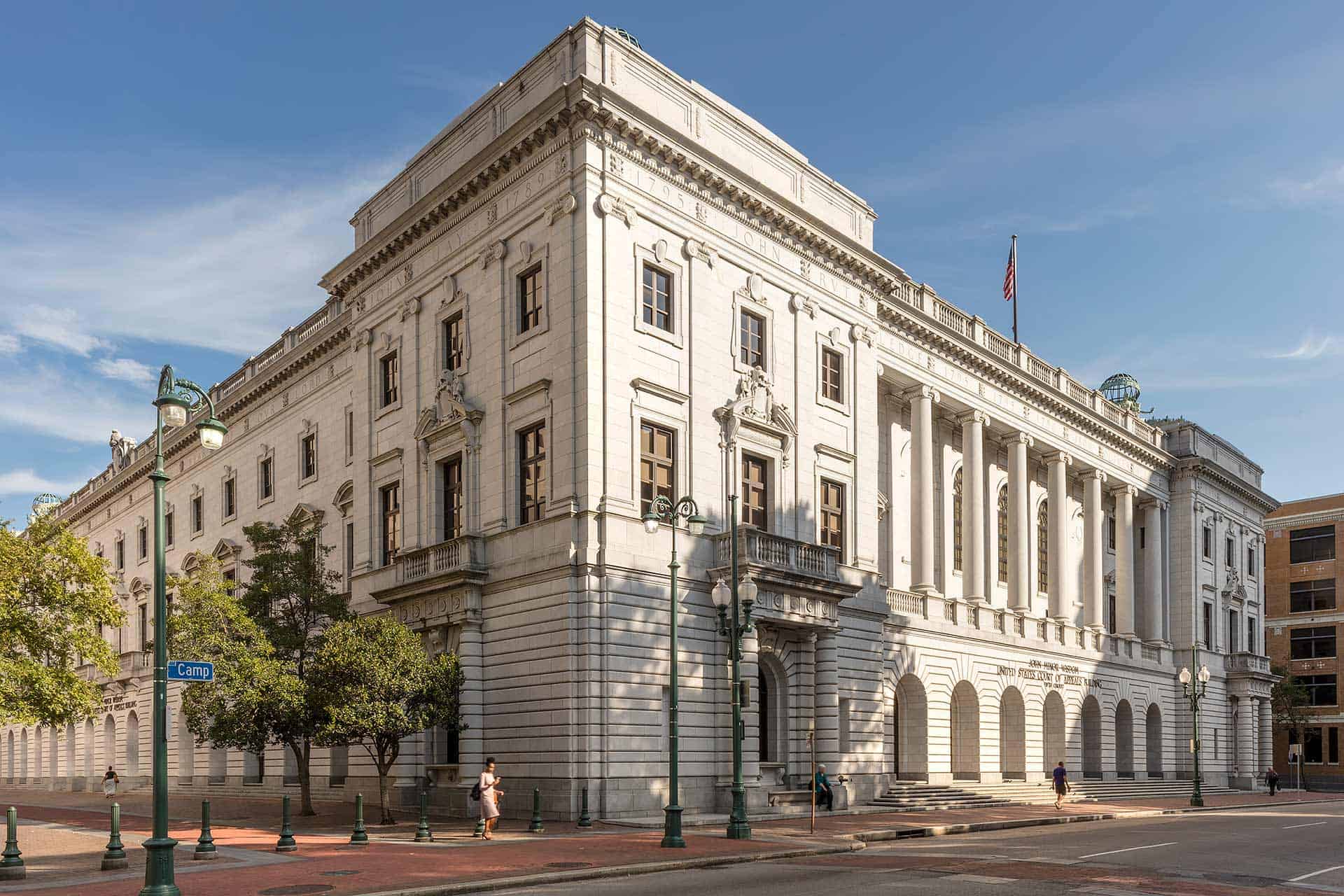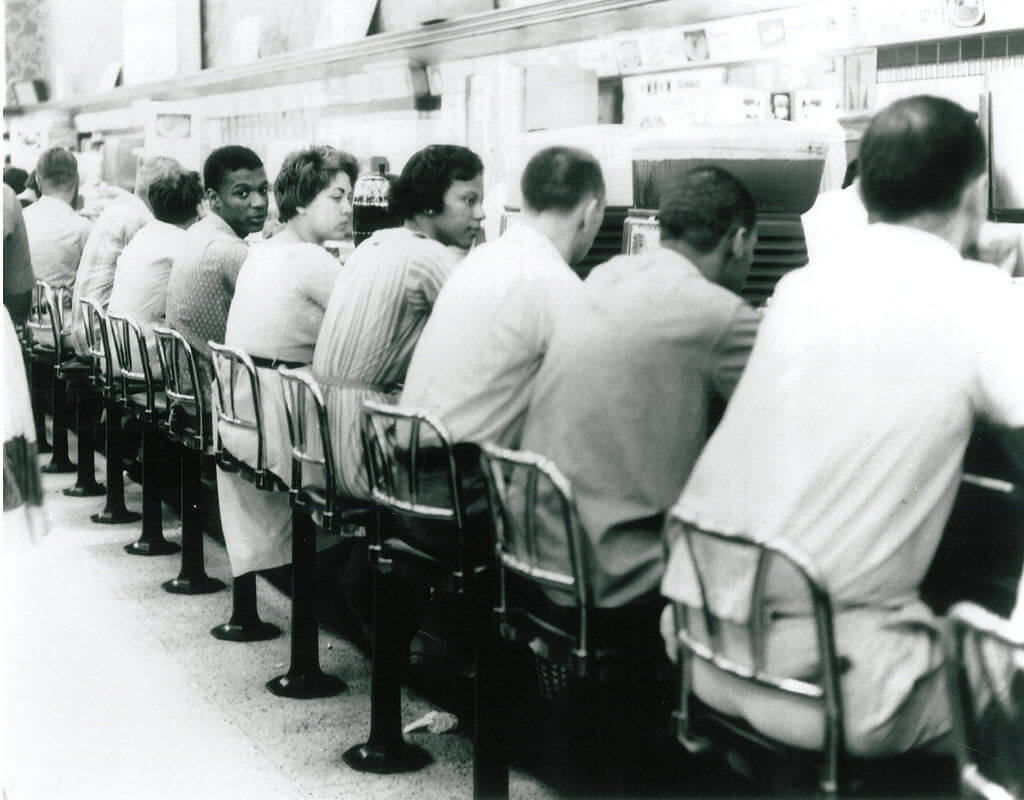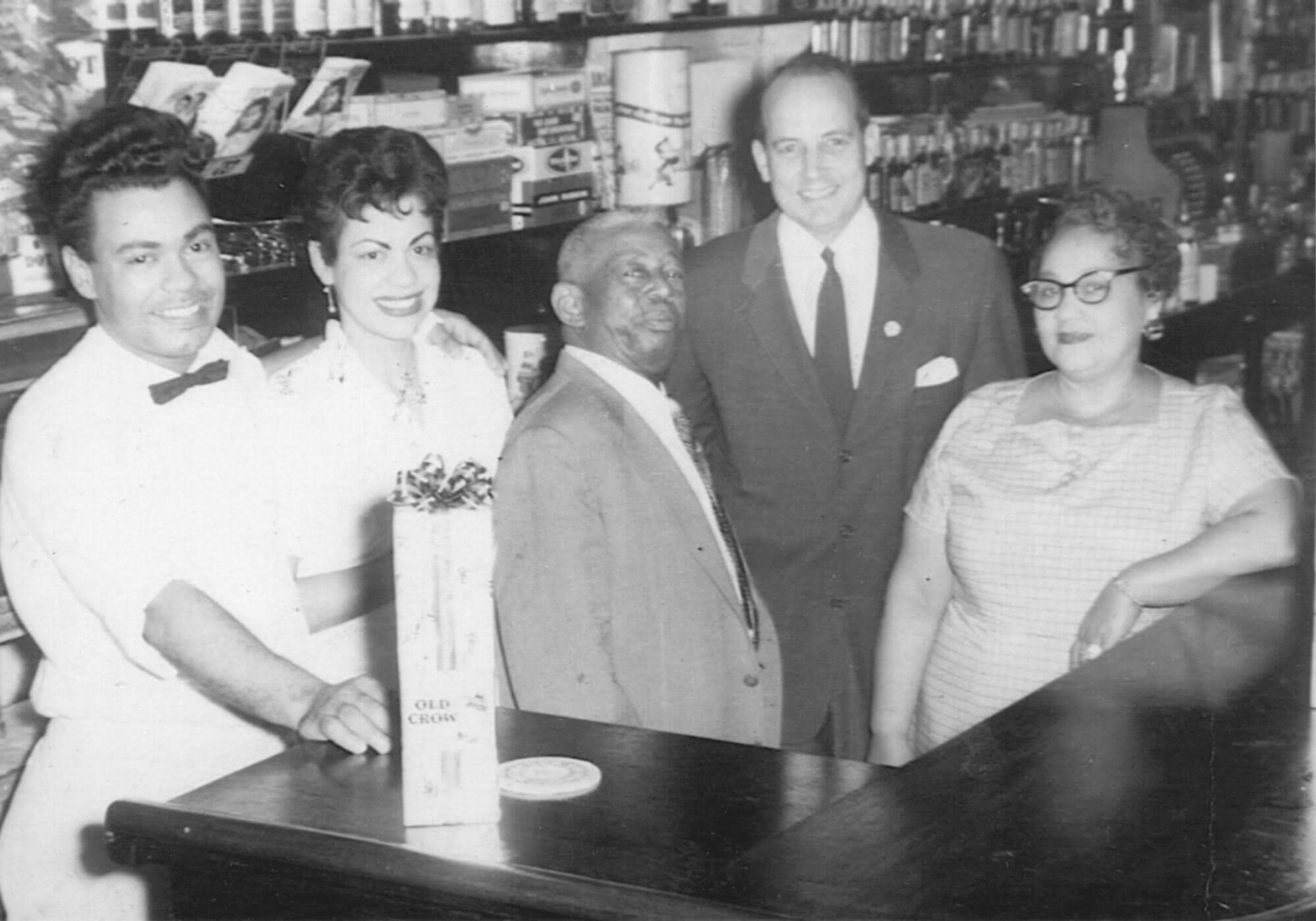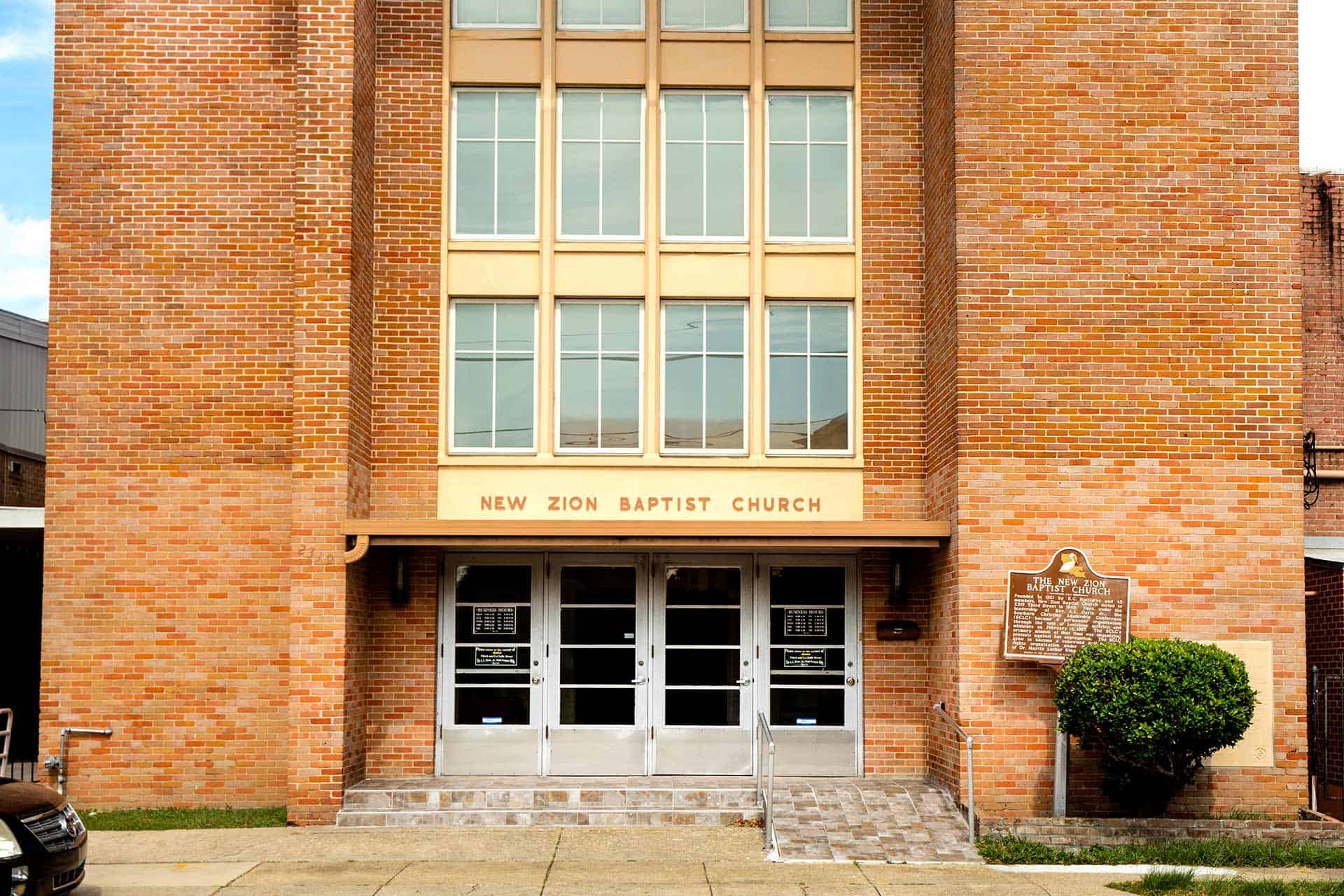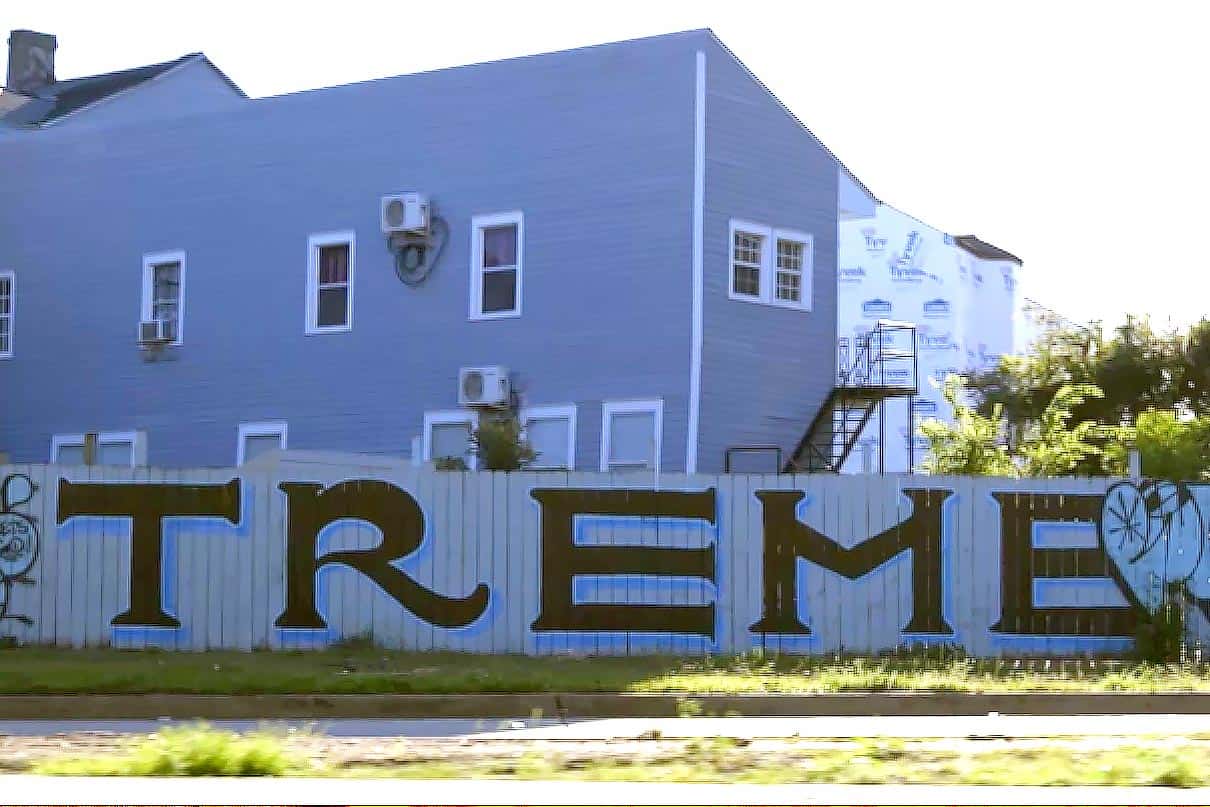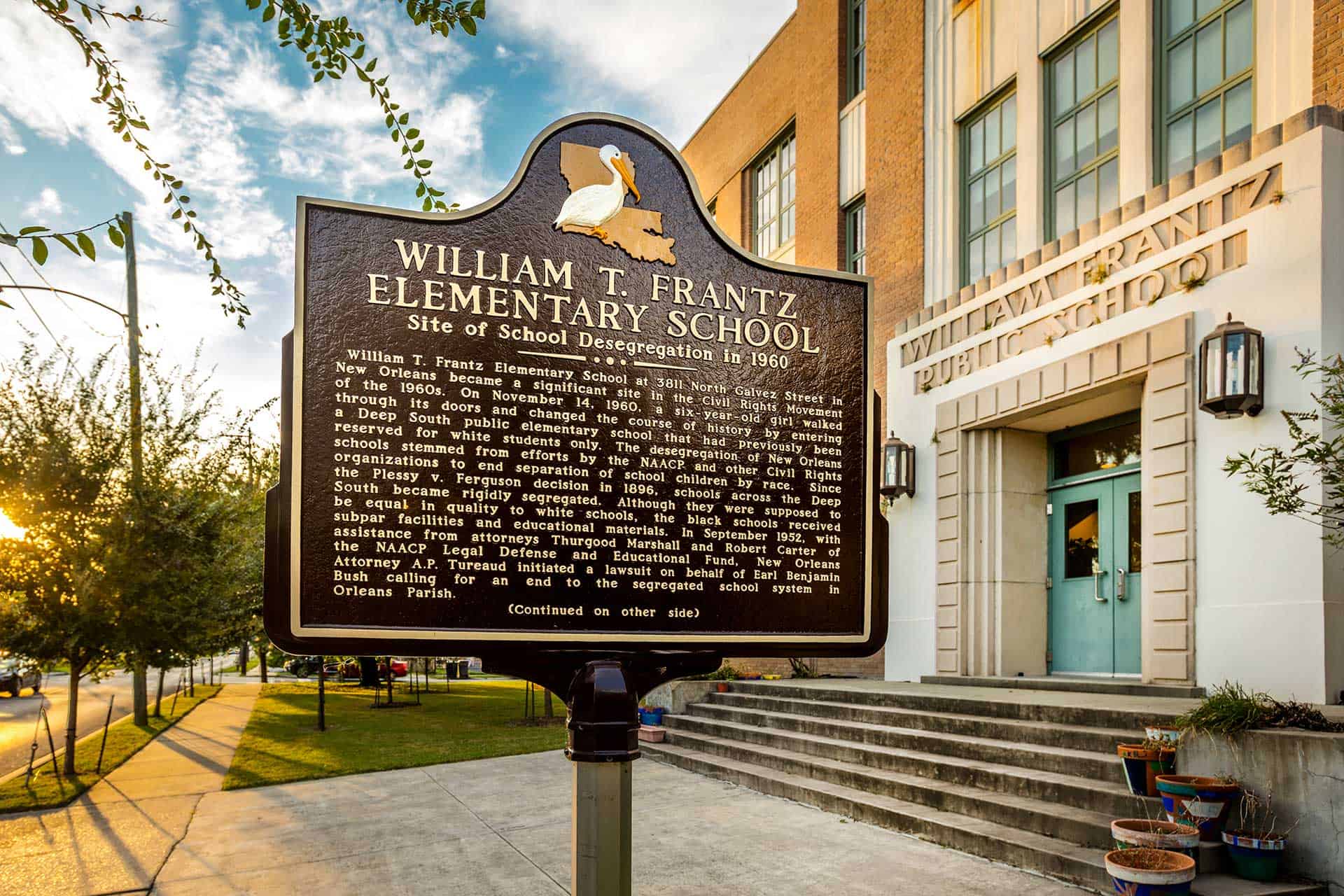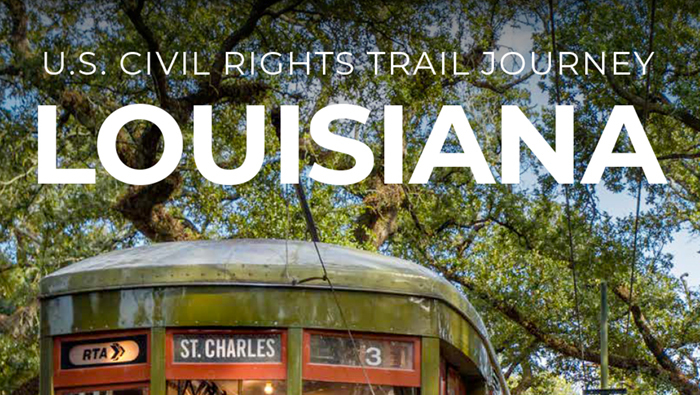A City Full of Culture and Activism That Inspired A Nation
New Orleans is often called the United States’ most international city and is world-renowned for its cultural gumbo, Creole food and as the birthplace of jazz. Its name conjures up images of the great Mississippi River, the French Quarter – with its wrought-iron balconies and patio cafés – as well as streetcars and oak-lined avenues filled with coffee shops and bookstores. New Orleans is one of the South’s most important cities. But it was not always the Big Easy. During the 1950s and 1960s, New Orleans was a center for activism where civil rights protestors used nonviolent tactics such as lunch counter sit-ins, store boycotts, marches and other demonstrations to call for equality. Their efforts led to four young girls integrating previously all-white elementary schools on Nov. 14, 1960: Leona Tate, Tessie Prevost and Gail Etienne entered McDonogh 19 in the Ninth Ward, and Ruby Bridges began classes at William Frantz.
The Southern Christian Leadership Conference, one of the most important organizations in the burgeoning Civil Rights Movement, was formally incorporated at the New Zion Baptist Church in New Orleans. The Rev. Martin Luther King Jr. was elected president, and many of the new group’s officers were from Louisiana. The Rev. A.L. Davis of New Orleans became second vice president, the Rev. T.J. Jemison of Baton Rouge was named secretary, Louis Berry of New Orleans became parliamentarian, and attorney Israel Augustine Jr., also of New Orleans, was elected to the executive committee.
Canal Street, a major shopping thoroughfare in the Crescent City, became a civil rights battleground. The city’s first lunch counter protests occurred here at McCrory’s Five and Dime and Woolworth’s. The McCrory’s group, called the CORE Four due to its connection to the Congress of Racial Equality (CORE), gained national attention because of its “criminal anarchy” conviction in a case that went to the U.S. Supreme Court. In Lombard v. Louisiana (decided on May 20, 1963), Justice Earl Warren wrote in his decision, “There is no constitutional way, as I see it, in which a State can license and supervise a business serving the public and endow it with the authority to manage that business on the basis of apartheid, which is foreign to our Constitution.”
Before the United States Supreme Court reversed Plessy v. Ferguson, its 1896 decision that effectively made segregation legal, Dooky Chase’s in the Tremé neighborhood had become the hot spot for discussing issues of civil and economic rights. In a time when it was illegal for white and Black people to sit together, Chef Leah Chase invited civil rights activists into the restaurant, regardless of race, to further the Civil Rights Movement. Strategy sessions there propelled protests in the courts and on the streets of New Orleans. In the 1960s, Thurgood Marshall, A. P. Tureaud, “Ernest” Dutch Moria (the first African American mayor of New Orleans) and other national leaders would join these sessions and dialogue over bowls of gumbo in Dooky’s upstairs meeting room.




